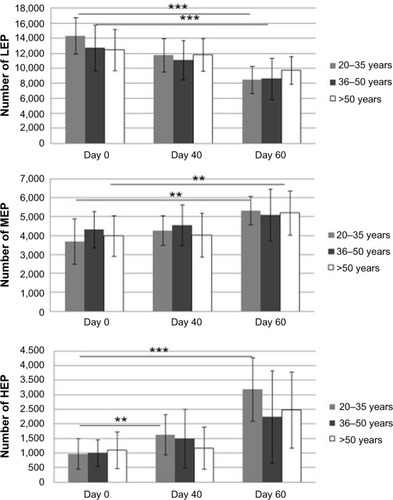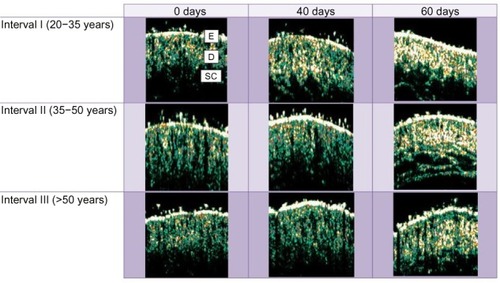Figures & data
Figure 1 Variation of the mean number of LEP, MEP, and HEP during topically applied vitamin C-based therapy.
Abbreviations: HEP, high echogenic pixel; LEP, low echogenic pixels; MEP, middle echogenic pixel.

Figure 2 The variation of age-dependent ultrasonic key markers at days 0, 40, and 60 of vitamin C-based therapy. A significant increase in the hyperechoic pixels is noticed in all age intervals throughout and after topical vitamin C therapy.

Figure 3 The variation of LEPs/LEPi ratio indicative of the dermal density according to phototype.
Abbreviations: LEPs, low echogenic pixels in the upper dermis; LEPi, low echogenic pixels in the lower dermis.

Table 1 The variation of the ultrasound parameters at days 0, 40, and 60 of topical vitamin C-based therapy, according to the three studied age intervals
